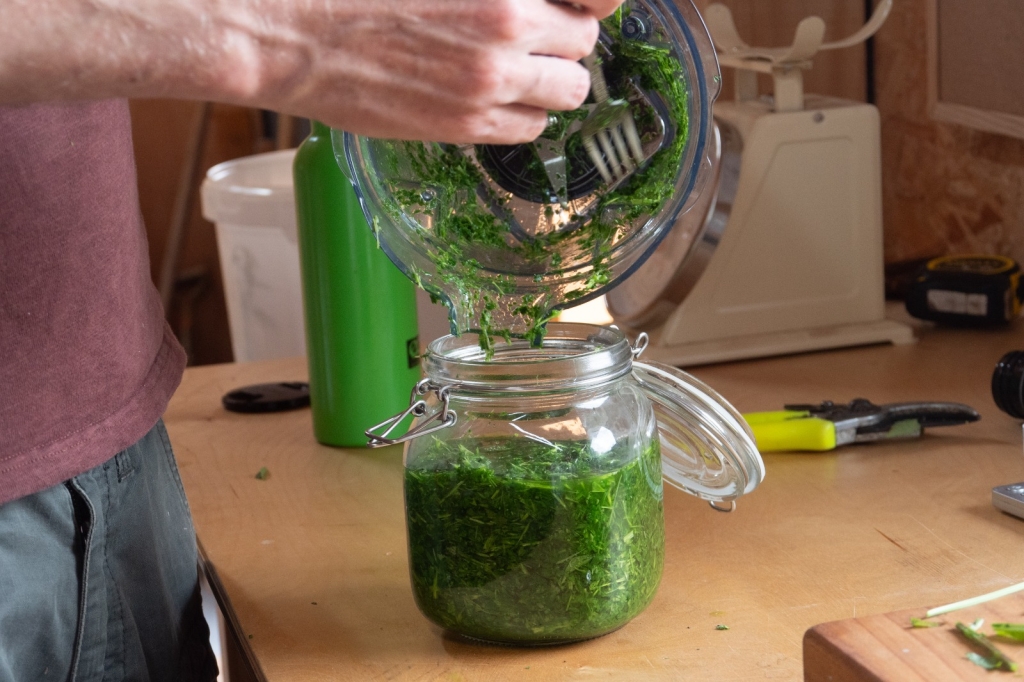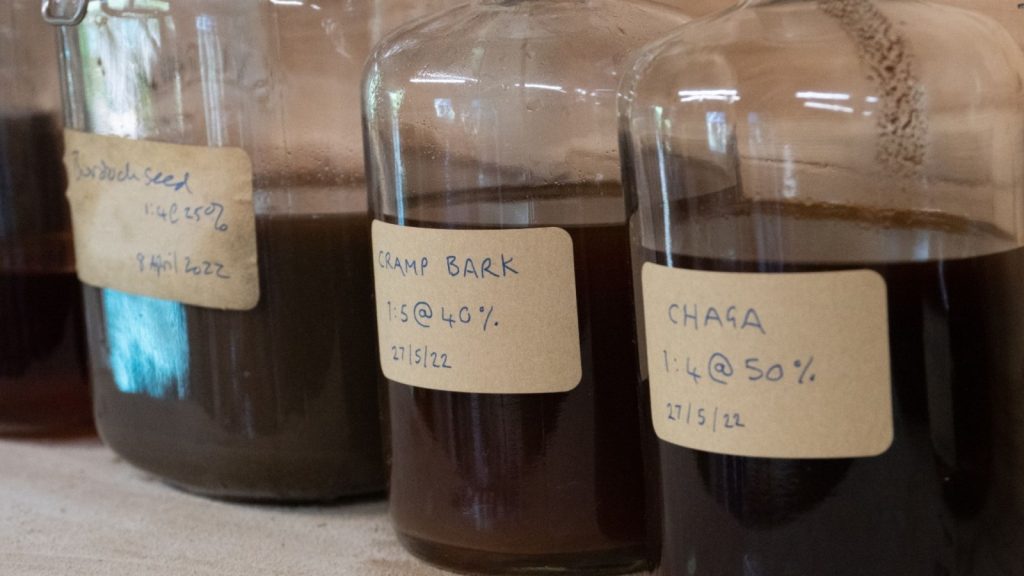How to make a macerated or infused tincture
What is a tincture?
Tinctures are herbs extracted into a solvent, usually a combination of alcohol and water (an ethanolic-aqueous blend), known as the menstruum. They reflect the scientific endeavour pursued by the herbal tradition to optimise the efficacy of their herbal solutions.
What is a macerated tincture?
A macerated tincture (otherwise known as an infused tincture) is the simplest way of making a tincture. It is made by soaking fresh or dried herbs in a menstruum in a sealed vessel for a couple of weeks. With daily stirring or agitation (shaking), the solvent extracts and preserves the soluble phytonutrients contained within the plants.
A slight disadvantage of this method is that a certain amount of the precious tincture remains in the herb residue (known as the marc) after pressing. A good press can mitigate this.
If you want an alternative to alcohol, you can use apple cider vinegar or glycerine. Note they are less effective solvents for some compounds.
An advantage of tinctures is that as the ratio of herb to menstruum is precise you can determine the quantity of herb in each volume of finished liquid extract. Although there are many variations in strength, macerated tinctures are often made at a ratio of 1:5. This means that 1 part herb is blended with 5 parts menstruum, ensuring that one teaspoon of the liquid at 5ml is equivalent to 1g of herb.
On the label of a tincture you will often see a ratio such as 1:5@25%; this refers to the ratio as described above and the percentage of alcohol – in this case 25% alcohol with 75% water.
What is a tincture used for?
Tinctures are an efficient way to extract the vitality within the herbs and are an effective preservative ensuring longevity. Tinctures can be used to support a wide range of health needs as they stimulate the taste buds as well as coming in direct contact with the digestive microbiome. Following a consultation, professional herbalists blend tinctures together to make a personalised prescription, also known as a magistral preparation.
What is the difference between a macerated, percolated and decocted tincture?
Macerated tinctures are made using an ethanolic-aqueous (alcohol-water) blend as a solvent, with fresh or dry herbs, soaked and stirred for a couple of weeks before pressing and filtering. They can be combined with glycerine. Macerated tinctures are good for a a extracting wide-range of active phytonutrients. They are also simple and cheap to set up. You do need a good press for the best extraction.
A percolated tincture is made by gradually passing the alcohol and water solvent mix through finely ground herbs contained within a narrow percolating column. The advantages are: they are best for making stronger extracts (1:1 or 1:2) and there is no need to use a press to squeeze out the last drops. The disadvantages are that they need to be made with dried and not fresh herbs and they cannot be used with plants high in resins or mucilage or that swell too much. Also, they tend to require more attention to technical detail than macerated tinctures.
A decocted tincture involves two separate processes; firstly macerating or percolating herbs in a strong ethanol-aqueous blend, pressing and filtering as required. Secondly, decocting the remaining marc from the initial tincturing stage in water and then adding the pressed and filtered decocted extract into the tincture for your final blended of decocted tincture.
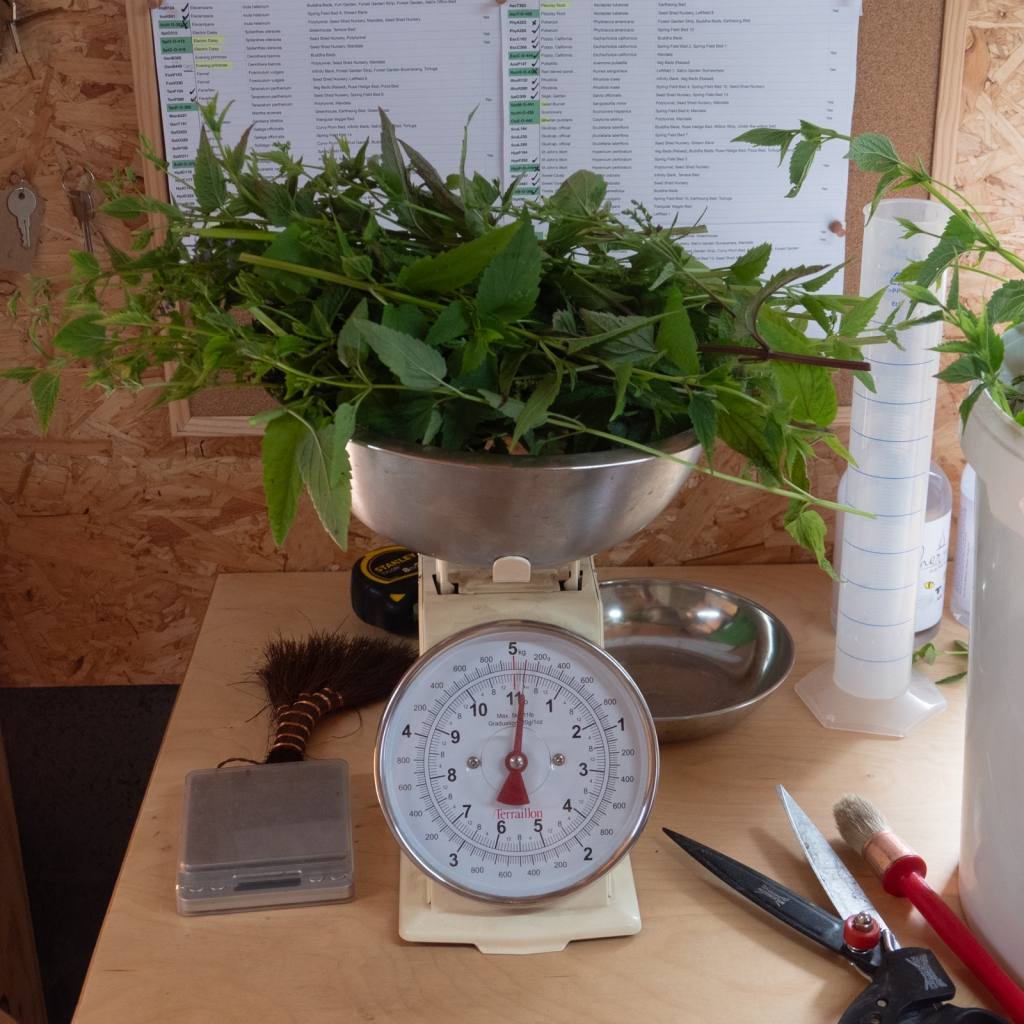
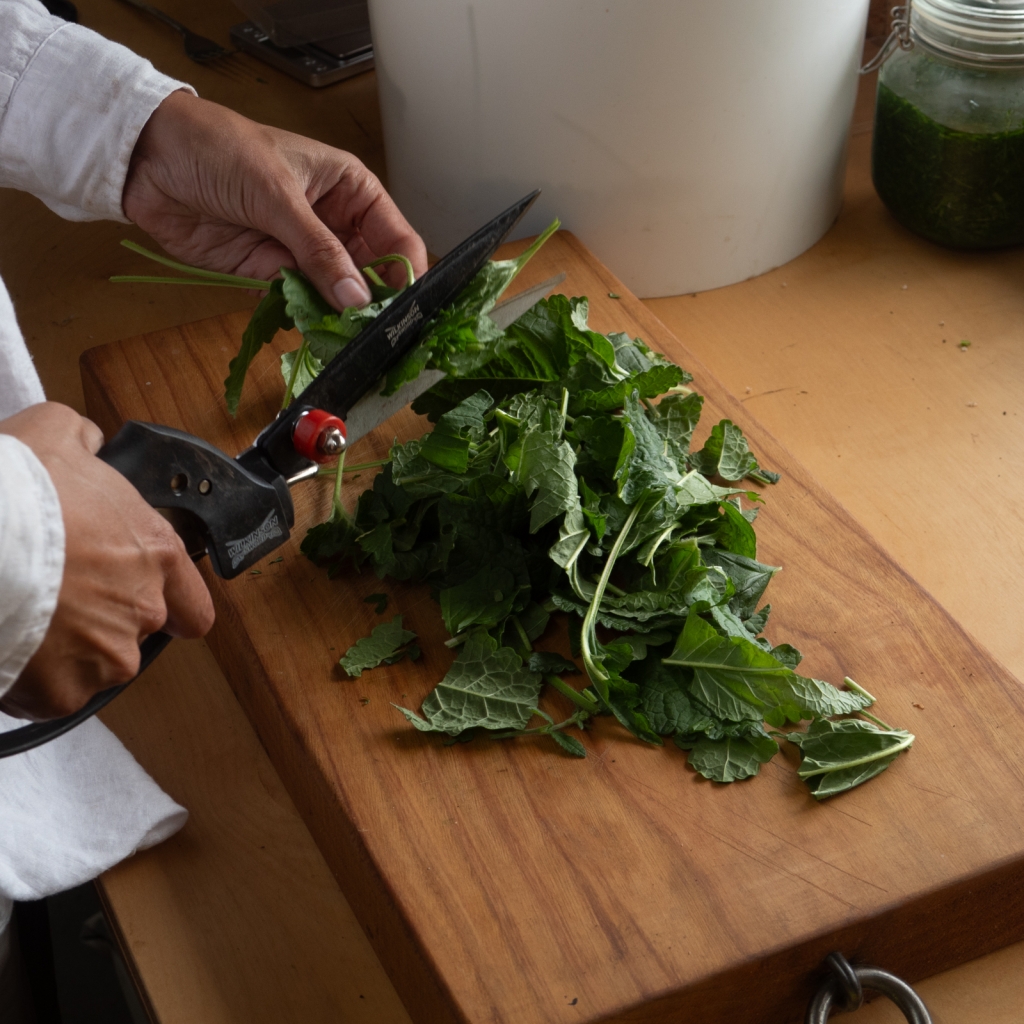
Which herbs can I use to make a macerated tincture?
Most herbs can be made into macerated tinctures. These are some favourites from our Head Seedsman Ben:
-
Angelica
Price range: £2.75 through £6.00 Inc VAT
There are many other herbs you can use:
- Burdock root
- Calendula flowers
- Chamomile flowers
- Lavender flowers
- Licorice Mint aerial parts
- Marshmallow root
- Sage leaf
- St John’s Wort flowering tops
- Thyme leaf
- Tulsi aerial parts
- Yarrow flowering tops
How do I make a macerated tincture?
The maceration method is probably the oldest method of tincture making. Its tried and tested, effective and with a clear step-by-step process ensuring success. As each herb has specific requirements and to ensure the best results, it is important to use the appropriate solvent strength, volume of menstruum and particle size to extract the phytonutrients you want. See this article for more information on some of the science behind herbal extraction: Making your herbs; the art and science of herbal preparation
Prep Time
15 mins
Infusion Time
2-4 weeks
Ingredients
- Dried herbs – finely cut 100g
- Solvent 500ml (e.g. vodka, glycerine, apple cider vinegar)
- Water
Equipment
- Jars for storing the maceration
- Measuring jug
- Scales
- Record book
- Sieve, muslin cloth or small press
- A grinder or pestle & mortar
- A chopping board
Note: A starting guide for dry herbs is to use a ratio of 1 part herb:5 parts menstruum (the liquid solvent) – in this example, it means you know that 5ml of the finished tincture extract is equivalent to 1g of the herb.
Alcohol: Vodka is recommended here as it doesn’t mask the taste of the herbs. If you have access to pure spirit you can dilute that as per your needs for each tincture.
Method
- Cut or grind the herb into small pieces and weigh the appropriate amount.
- Add the suitable strength of alcohol with the water, ensuring the herbs are submerged. It is important that the herbs are covered entirely by the menstruum so there is no oxidation or bacterial contamination.
- If you find that the menstruum doesn’t cover the herb, add more until it does and adjust the ratio in your records accordingly. Cutting your herbs finely and evenly will ensure the herbs are covered.
- Place in a sealed and labelled jar, in a cool dark spot for 2-4 weeks.
- Stir or agitate everyday.
- Strain and squeeze the ‘marc’ (the remaining soaked herbs’) either through a sieve, a muslin cloth or a small press.
- Filter the tincture before use if necessary through filter paper.
- Label and date your tincture
- Use as appropriate for the specific herb and need
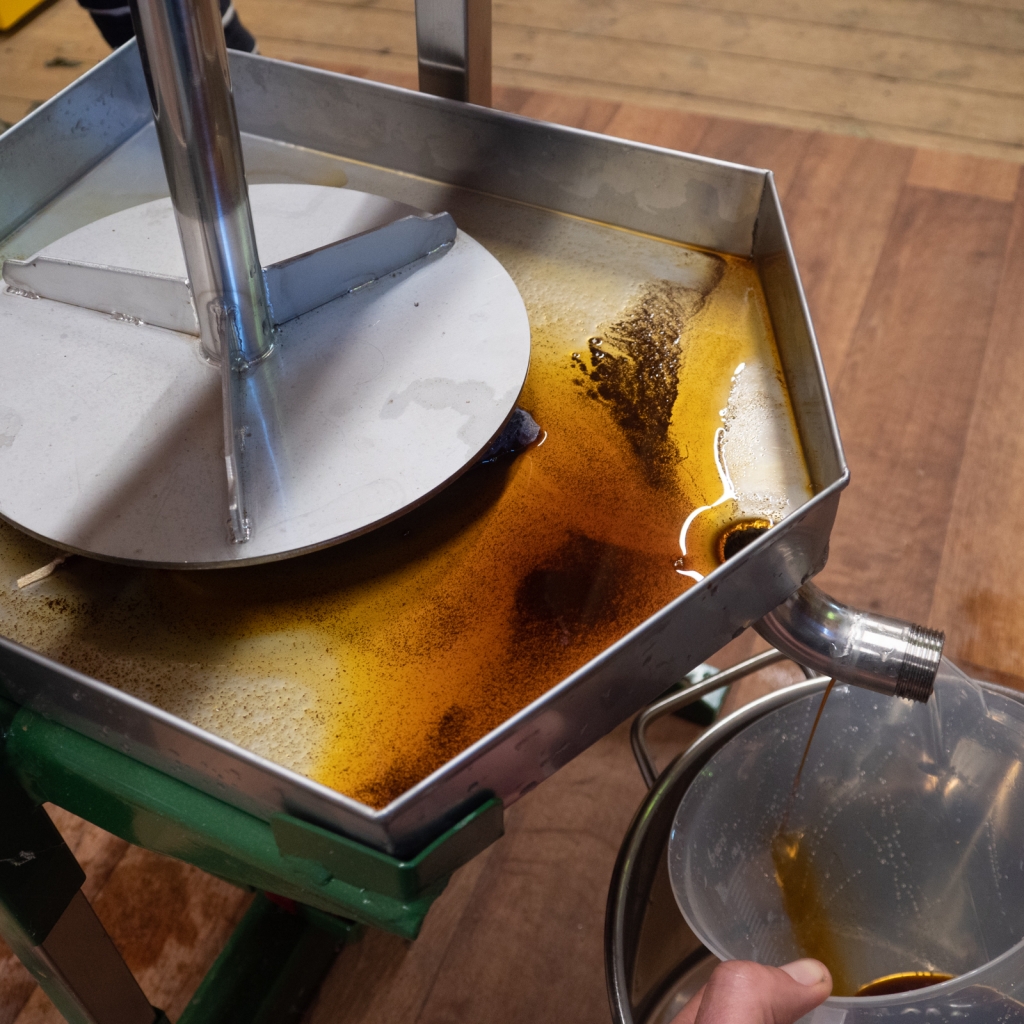

Note: To make stronger extracts you lower the volume of liquid to herb- though it is essential that the menstruum liquid completely covers the herb. See here about percolation too.
When making tinctures there are all sorts of idiosyncrasies; some herbs are extract well fresh (like rose and lemon balm), some in low alcohol (like mucilage containing herbs), some in high alcohol (like resin and volatile oil rich herbs like calendula and lavender), some at weaker ratios of 1:10 and some at more concentrated ratios of 1:1 or even higher, some with a little added vinegar (like horseradish), some with glycerine. It is important that you look into the specifics of each herb prior to making and using any tinctures.
A general rule for the alcohol strength need for extraction is:
- 25% polar polysaccharides, flavonoids
- 45% alkaloids
- 60% Volatile oils
- 90% resins, oleoresins
A note about fresh tinctures
Fresh herbs of course are often high in water content (ranging from around 30-80%). When making a fresh herb tincture you should put approximately double the strength of alcohol you want to end up with in the finished tincture, as the water in the plant will dilute the starting alcohol concentration; (e.g. 1 part fresh herb:2.5 parts menstruum at 50% alcohol will leave you with a 1:5 finished tincture at 25% alcohol – assuming the fresh herb contains 50% water. It is essential that the alcohol strength remains above 20% for a decent shelf-life of a couple of years.
With fresh herbs, it can be helpful to use a blender to reduce volume of herb to ensure they are covered by the solvent. But if you do use a blender only use it briefly to avoid turning it into a paste.

